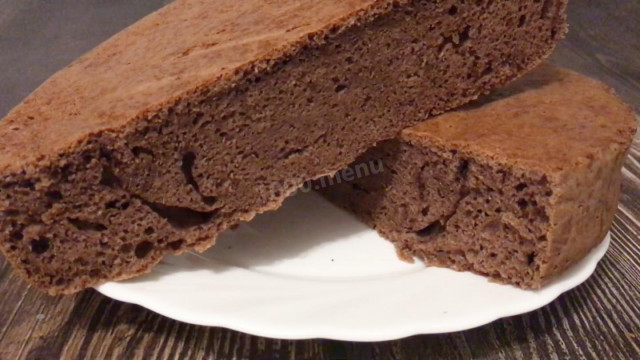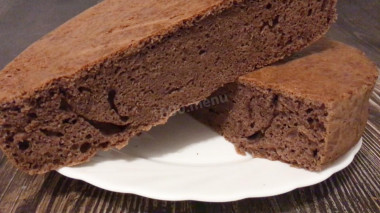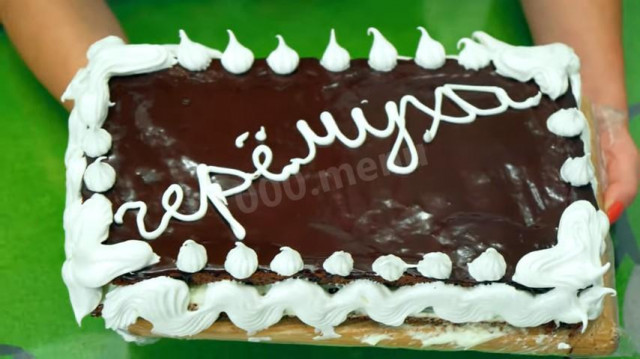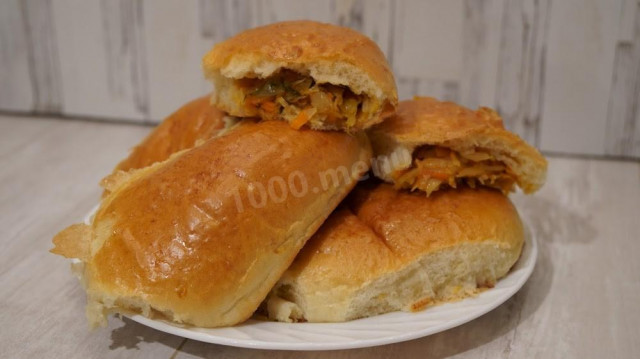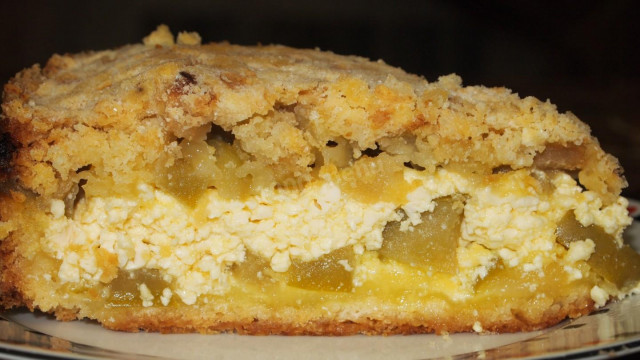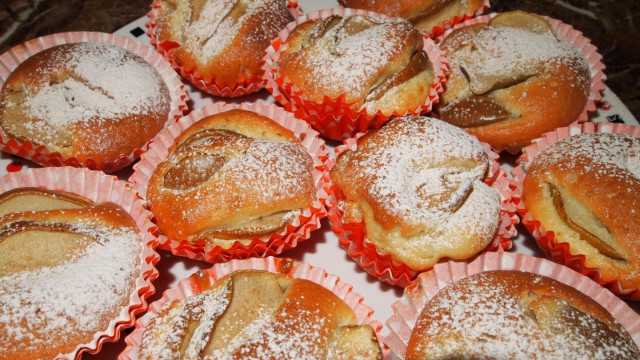Composition / ingredients
Cooking method
Separate the whites from the yolks.
Stir the yolks, add milk and butter, mix well.
Beat the whites to a fluffy foam. Continuing to beat, add sugar gradually.
Continue to beat until firm peaks.
Add the sifted flour, cocoa and baking powder to the proteins, mix.
Pour in the yolk mixture, mix.
Pour the finished dough into the mold (I have a shape of 18 cm).
Put in a preheated 180 C oven and bake for 35-40 minutes.
Allow the biscuit to cool, then remove it from the mold.
Sponge cake is a solid baked product in the form of a small flat cake, which in North America can be called a "cookie" or "cracker". The term biscuit also refers to sandwich-type biscuits, where a layer of cream or fudge is clamped between two biscuits. As could be noted, however, it has become more and more common within the UK for "baking", which is used to distinguish between a softer, larger and requiring prolonged chewing product and a harder, more brittle "biscuit".
In this regard, the British use of the word "biscuit" was defined in defense of a tax ruling determined in favor of McVitie's and their Jaffa pie product. The Tax Administration defined this pie as a biscuit and therefore imposed a value-added tax. Jaffa pie was made from sponge dough with chocolate icing. However, cookies with icing (sponge cake) were considered a luxury item and were subject to an additional tax (duty). The successful defense relied on the fact that 'biscuits remain soft when stale, whereas pies become hard when stale." These were the ways to avoid taxes.
In the UK, the food biscuit has a strong cultural identity as a traditional accompaniment to a cup of tea, and is also regularly consumed. Many tea drinkers dip their biscuits in tea, allowing them to absorb the liquid and soften a little before consumption.
Although there are many regional variations, both sweet and unsweetened, "biscuit" is generally used to define the sweet version. Sweet biscuits are usually eaten as a snack and may contain chocolate, fruit, jam, nuts or even used as sandwiches with other fillings. Unsweetened biscuits, more often called crackers or crusty bread, are simpler and are usually eaten with cheese after the main meal.
Caloric content of the products possible in the composition of the dish
- Whole cow's milk - 68 kcal/100g
- Milk 3.5% fat content - 64 kcal/100g
- Milk 3.2% fat content - 60 kcal/100g
- Milk 1.5% fat content - 47 kcal/100g
- Concentrated milk 7.5% fat content - 140 kcal/100g
- Milk 2.5% fat content - 54 kcal/100g
- Chicken egg - 157 kcal/100g
- Egg white - 45 kcal/100g
- Egg powder - 542 kcal/100g
- Egg yolk - 352 kcal/100g
- Ostrich egg - 118 kcal/100g
- Whole durum wheat flour fortified - 333 kcal/100g
- Whole durum wheat flour, universal - 364 kcal/100g
- Flour krupchatka - 348 kcal/100g
- Flour - 325 kcal/100g
- Granulated sugar - 398 kcal/100g
- Sugar - 398 kcal/100g
- Butter 82% - 734 kcal/100g
- Amateur unsalted butter - 709 kcal/100g
- Unsalted peasant butter - 661 kcal/100g
- Peasant salted butter - 652 kcal/100g
- Melted butter - 869 kcal/100g
- Cocoa powder - 374 kcal/100g
- Baking powder - 79 kcal/100g

